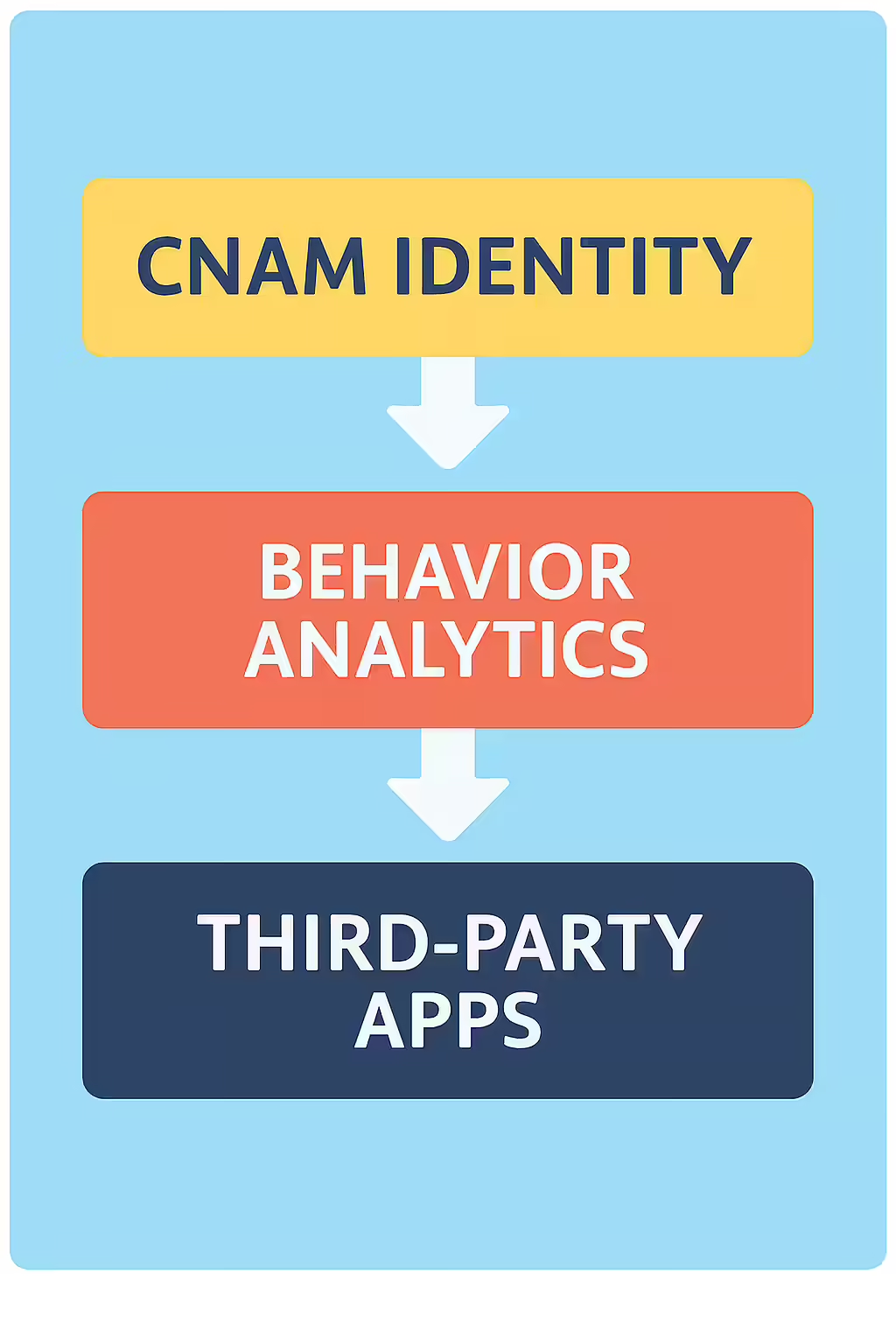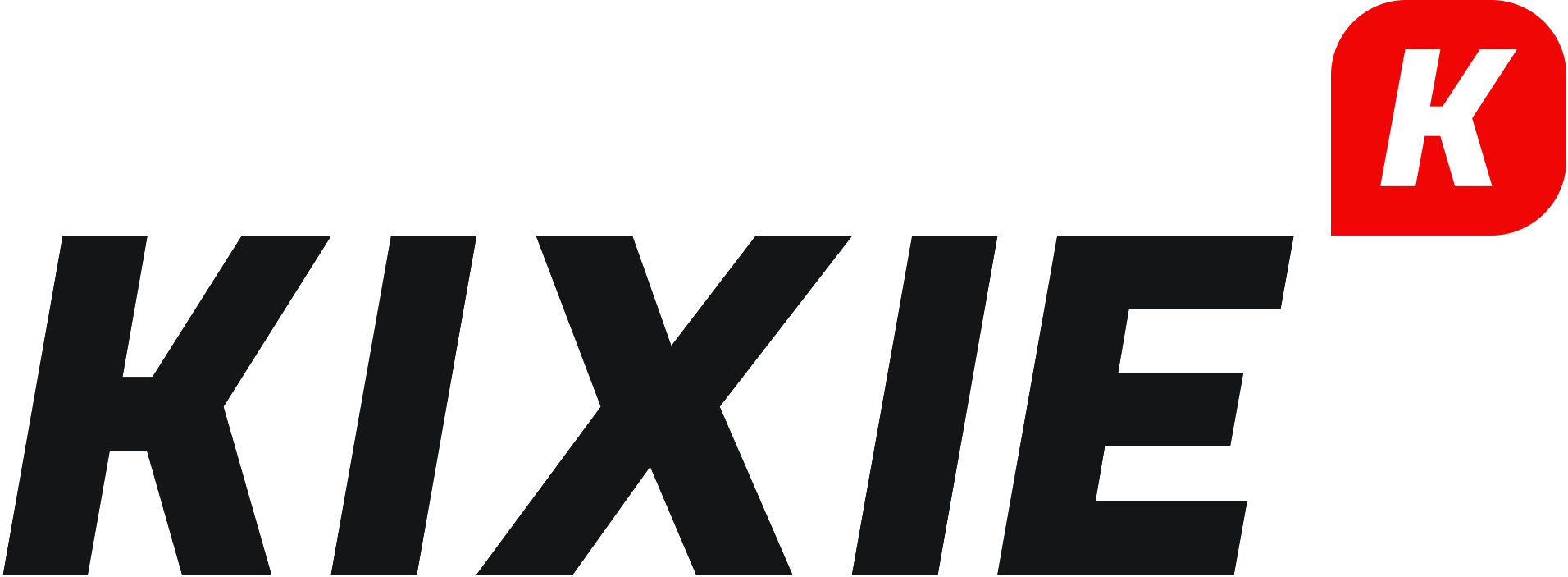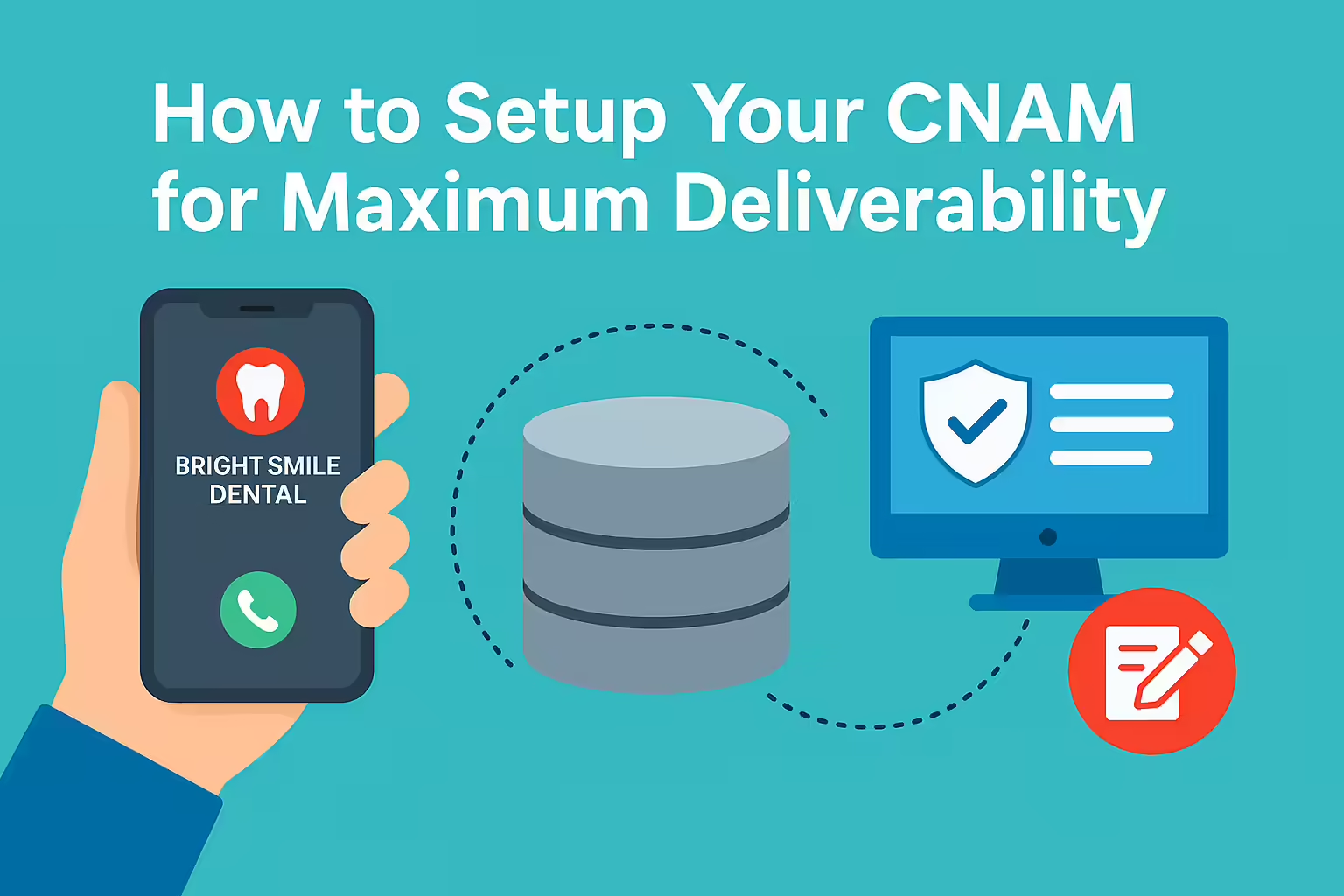TL;DR: Quick Reference Guide
-
What is CNAM? CNAM (Caller Name Presentation) is the 15-character name that displays on a Caller ID for U.S. and Canadian phone numbers. It is separate from the phone number (CLID) and is looked up by the recipient's carrier in a database when a call comes in.
-
Formatting Rules: Your CNAM must be 15 characters or less (including spaces), use only uppercase letters, numbers, and limited punctuation, and must start with a letter.
-
Why It's Critical: A registered CNAM significantly increases call answer rates, enhances brand reputation, and is a foundational step in avoiding spam flags by establishing your number's legitimacy. 75% of people ignore calls from unknown numbers.
-
How It Works (The "CNAM Dip"): Your name is not sent with the call. The recipient's carrier performs a database lookup (a "dip") to find the name associated with your number. This system relies on a fragmented ecosystem of about 8-12 competing databases (LIDBs), which is the primary cause of inconsistency.
-
Why It Fails:
-
Propagation Delays: It can take anywhere from 48 hours to several weeks for a CNAM update to spread across all carrier databases and their internal caches.
-
Landline vs. Mobile: CNAM generally works on landlines but is an opt-in, paid feature for most mobile phone users. If the recipient hasn't enabled it, your CNAM won't show.
-
Carrier Caching: To save money on "dip fees," carriers often use outdated, cached information instead of performing a live lookup, causing old names to display.
-
-
How to Set It Up:
-
Craft Your Name: Choose a recognizable, 15-character name.
-
Contact Your Provider: You must submit the CNAM change request through your phone service provider (e.g., VoIP provider).
-
Verify Your Business: Be prepared to provide business verification like an EIN.
-
Test and Wait: Test by calling numbers on different carriers (AT&T, Verizon, T-Mobile) and be patient for propagation.
-
-
Modern Reputation Management (Beyond CNAM): Your caller reputation has three layers:
-
Foundational (CNAM): Your registered name.
-
Behavioral (Carrier Analytics): High call volumes or low answer rates can trigger "Scam Likely" labels, regardless of your CNAM.
-
Crowd-Sourced (Third-Party Apps): Apps like Hiya and Truecaller use their own databases and can override your official CNAM based on user reports. You should register your numbers with these services directly.
-
-
The Future is RCD: For mobile phones, CNAM is being replaced by Rich Call Data (RCD), which is enabled by the STIR/SHAKEN framework. RCD allows for displaying a full business name, logo, and a call reason, offering a more secure and branded experience.
Your Caller ID Name is Your Digital Handshake
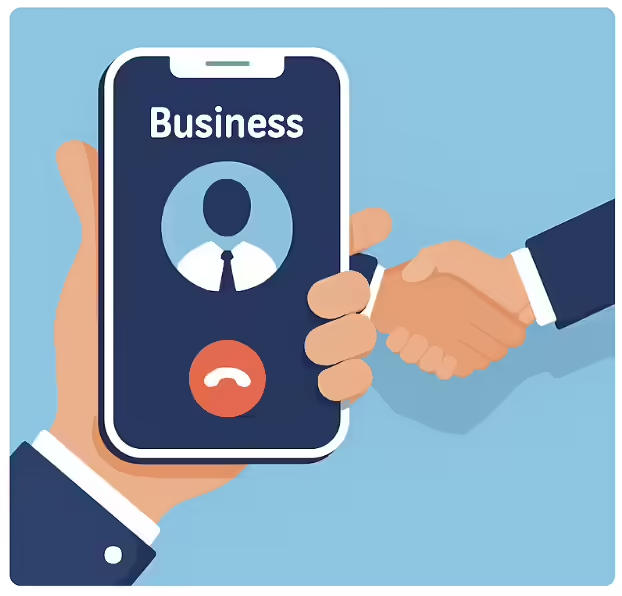
In the world of business outreach, the telephone remains a powerful tool. However, its effectiveness is consistently undermined by a single, pervasive issue: call avoidance. With research showing that 75% of people ignore calls from unknown numbers, businesses that rely on outbound calling face a significant barrier to connecting with their audience. Every unanswered call represents a missed opportunity, a waste of resources, and a potential customer relationship that never materializes. The primary tool to combat this is the Caller ID Name, or CNAM. A properly configured CNAM transforms an anonymous phone number into a recognized, trusted identity, acting as a digital handshake that introduces your business before the call is even answered. It is the critical first step in moving from being perceived as a potential nuisance to a legitimate, professional organization.
However, the process of setting up a CNAM that displays correctly is notoriously complex. The telecommunications environment is a fragmented system of competing databases and inconsistent carrier policies, which is why many businesses struggle with incorrect or missing caller ID information. This guide serves as a definitive resource, breaking down the entire CNAM ecosystem. Each section is designed to be self-contained, providing full context so it can be understood on its own. We will explain the infrastructure, provide a strategic framework for setup, and offer advanced troubleshooting for today's challenging environment of spam filtering and third-party call-blocking apps.
Deconstructing CNAM – The Bedrock of Caller Identity
Key Insight: CNAM is not just a technical feature—it's your business's first impression on every call. Understanding its mechanics is essential for maximizing your outbound calling success.
To effectively manage your business's outbound calling identity, it is essential to have a precise understanding of Caller ID Name (CNAM). CNAM, an acronym for Caller Name Presentation, is a service within the U.S. and Canadian telephone networks that displays a name associated with an incoming phone number on the recipient's Caller ID. This name, which can be up to 15 characters long, provides crucial context beyond the simple 10-digit phone number. If no CNAM is set, the display often defaults to the city and state associated with the number's area code. It is critical to distinguish CNAM from the Caller ID number itself, technically known as the Calling Line Identification (CLID). The CLID is the number; the CNAM is the text name that the recipient's carrier looks up in a database to display alongside it.
CNAM entries must adhere to strict industry-standard formatting rules:
-
Character Limit: The name cannot exceed 15 characters, including spaces.
-
Character Type: Only uppercase letters, numbers, periods, commas, and spaces are permitted. Special characters like ampersands are generally not allowed.
-
Starting Character: The string must begin with a letter.
-
Uniqueness: The name should be a unique identifier for your business, not a generic term like a city or state.

CNAM vs. Caller ID (CLID) at a Glance
The terms CNAM and Caller ID are often used interchangeably, creating confusion. The following table clarifies the distinct roles of each component.
| Feature | Caller ID (CLID) | Caller Name (CNAM) |
| What It Is | The 10-digit telephone number of the calling party. | The 15-character text name associated with the calling party. |
| Data Transmitted | The number is sent directly with the call's signaling information (e.g., in the SIP header for VoIP calls). | The name is not sent with the call. It is looked up by the recipient's carrier in a separate database. |
| Primary Function | To identify the specific telephone line originating the call. | To provide context, identity, and trust for the recipient. |
| Controlled By | The originating carrier, as part of the call setup process. | The originating carrier's submission to Line Information Databases (LIDBs). The business owner initiates the change. |
| Display Example | (415) 555-1234 | KIXIE SALES |
In an environment where call screening is the norm, a properly configured CNAM is a non-negotiable strategic asset. Its primary benefit is a significant increase in call answer rates; a prospect is far more likely to answer a call from "Bright Smile Dental" than an anonymous number.
Every call is also a brand interaction, and a professional CNAM reinforces your company's legitimacy and credibility. Furthermore, while not a direct anti-spam tool, a registered CNAM is the foundational step in establishing a number's identity, helping to differentiate it from the high volume of anonymous, potentially fraudulent calls that are often flagged by carrier analytics.
How CNAM Actually Works

To effectively manage and troubleshoot your business's Caller ID Name (CNAM), it is crucial to understand the complex, decades-old infrastructure that governs it. A common misconception is that the caller's name is transmitted with the call itself; it is not. When a business makes a call, its phone system sends only the numeric Caller ID (the CLID) to the recipient's phone company, known as the terminating carrier. The responsibility for displaying a name falls entirely on that terminating carrier.
In the split second before the recipient's phone rings, the carrier performs a real-time database query called a "CNAM dip". It takes the incoming number and "dips" it into a database to find an associated 15-character name. If a match is found, that name is displayed on the recipient's device. The databases used for these lookups are known as the Line Information Database (LIDB). However, the LIDB is not a single, centralized system but a fragmented ecosystem of 8 to 12 competing databases operated by different carriers and data companies.
Technical Note: The "CNAM dip" is a real-time database query that happens in milliseconds. However, the fragmented nature of the LIDB ecosystem means your CNAM update must propagate across multiple independent databases before it displays consistently.
This fragmentation is the primary source of CNAM display issues. There is no universal standard forcing these databases to sync in real-time. Your provider might update one database, but that change can take days, weeks, or even longer to propagate to the others. If a recipient's carrier subscribes to a database that hasn't received the update, it will display old or incorrect information. This problem is compounded by economics. Terminating carriers must pay a small "dip fee" for every database lookup. To reduce costs, many carriers rely on their own internal cache of CNAM data, which they may only refresh periodically. This means that even after the central databases are updated, a recipient's carrier might continue to display outdated information until its next scheduled cache refresh, leading to frustrating delays and inconsistencies.
Crafting and Registering Your CNAM for Trust
Registering your business's Caller ID Name (CNAM) is a strategic process that requires a clear understanding of its technical limitations and the fragmented network it operates on. The goal is to submit a trustworthy, 15-character identity that will display consistently across various phone carriers. Since businesses cannot edit the central CNAM databases (known as LIDBs) directly, the process must be initiated through your telecommunications provider.

The registration process follows four universal steps:
-
Craft Your 15-Character Identity: This is a critical branding decision. The name must be professional, instantly recognizable, and adhere to the strict 15-character limit (including spaces). It can only contain uppercase letters, numbers, and limited punctuation, and must start with a letter. For example, "Johnson & Sons Premium Home Services LLC" might become "JOHNSONS HOME".
-
Initiate the Request with Your Service Provider: Contact your VoIP provider or phone carrier to request a CNAM update. This is typically done through an online portal or a support ticket. Your provider acts as the intermediary, submitting your chosen name to the authoritative CNAM databases.
-
Provide Business Verification: To combat fraud, many providers now require business verification before processing a CNAM request. Be prepared to provide your Employer Identification Number (EIN) or other official registration documents. This step adds a layer of trust and legitimacy to the entire system.
-
Test and Monitor Propagation: After submission, the update does not happen instantly. It can take anywhere from a few days to several weeks for the new name to propagate across all the different carrier databases and caches. It is essential to test the new CNAM by calling phones on different networks (e.g., AT&T, Verizon, T-Mobile) to verify when and where it begins to display correctly.
Pro Tip: When choosing your display name, prioritize recognition by using the brand name your customers know best. Avoid ambiguous terms like "SALES DEPT" that lack a unique brand identifier, and ensure consistency across all your business's outbound numbers to build a cohesive brand identity.
Troubleshooting Why Your CNAM Fails to Display
One of the most common challenges for businesses is setting up a Caller ID Name (CNAM) only to find it displays incorrectly or not at all. These failures are symptoms of the complex and fragmented telecommunications system that underpins caller identity. The CNAM is a 15-character name that the recipient's carrier is responsible for looking up in a database, known as a Line Information Database (LIDB), before displaying it on the recipient's screen. Understanding the points of failure in this lookup process is key to effective troubleshooting.
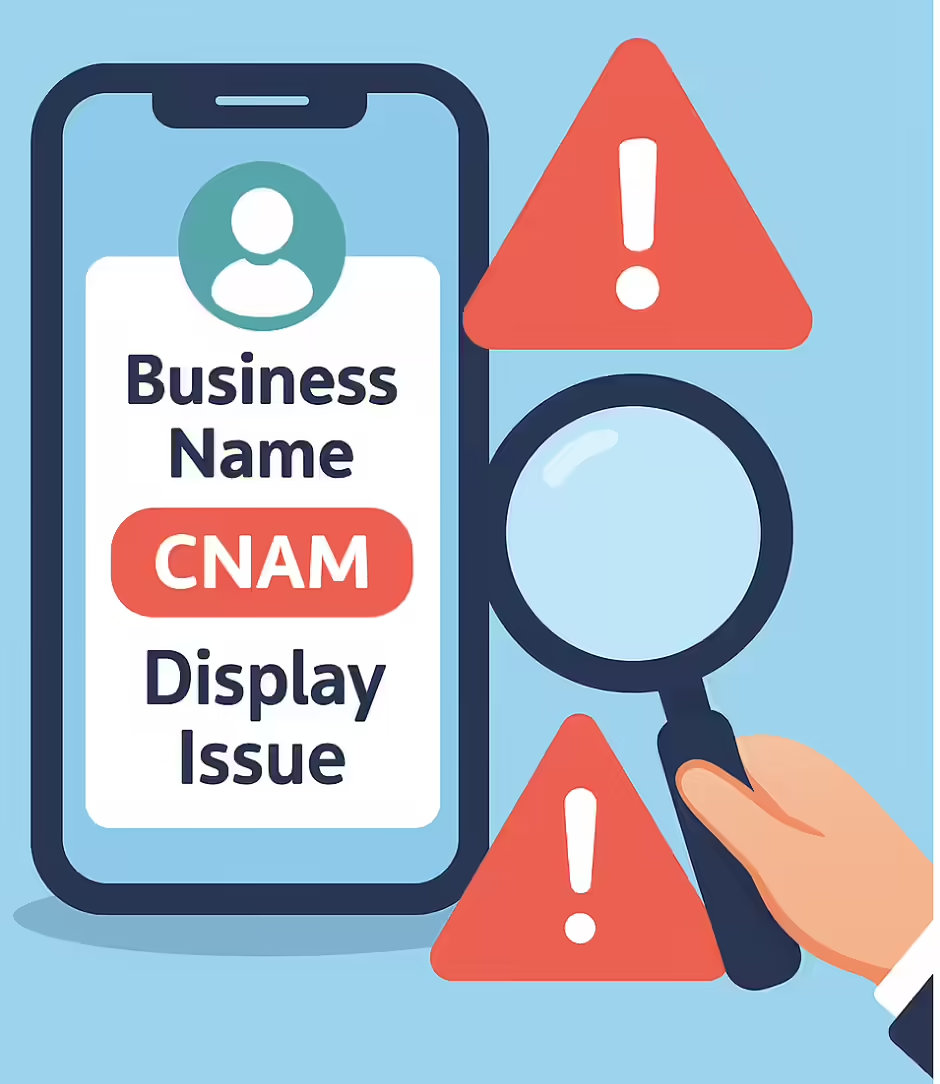
The most significant factor in CNAM reliability is the recipient's network type: landline versus mobile. The traditional landline network was built with the LIDB system as an integral component, making CNAM lookups a standard procedure. In contrast, mobile carriers developed their networks separately and often treat the legacy LIDB system as a non-essential feature to avoid its complexities and fees. Consequently, for most mobile users, CNAM is an optional, paid add-on service that the recipient must enable. If they haven't, your CNAM will not be displayed on their phone, regardless of how perfectly you have configured it.
CNAM Display Reliability: Landline vs. Mobile
This table summarizes the key differences in how CNAM is handled by landline and mobile networks.
| Feature | Landline Network | Mobile Network |
| Default Status | Enabled by Default | Opt-in Required by Recipient |
| Underlying Technology | PSTN / SS7 | VoIP / SIP |
| Data Source | Decentralized LIDBs | Proprietary Carrier Databases & Third-Party Apps |
| Display Reliability | Generally High (but can be outdated) | Highly Inconsistent / Low |
| Cost to Recipient | Usually Included in Plan | Often a Paid Add-on Service |
| Future Trend | Legacy System | Being Replaced by Rich Call Data (RCD) |
Troubleshooting Checklist: First confirm with your provider that the CNAM was submitted correctly. Then, test by calling numbers on multiple carriers (landline and mobile) to isolate the issue. If the problem is specific to one carrier, report this detailed finding back to your provider.
Beyond the landline/mobile divide, other common failure points include propagation delays and carrier caching. After you submit a CNAM update, it must propagate across roughly a dozen independent databases, each with its own refresh cycle. This can take anywhere from 48 hours to several months. Furthermore, to save money on database "dip fees," a recipient's carrier may use its own local cache of CNAM data, which might only be updated weekly or even monthly, causing old information to persist. To troubleshoot, first confirm with your provider that the CNAM was submitted correctly. Then, test by calling numbers on multiple carriers (landline and mobile) to isolate the issue. If the problem is specific to one carrier, report this detailed finding back to your provider, who can re-verify the record and, in some cases, "rebroadcast" the update to help accelerate propagation.
Managing CNAM in an Era of Spam Filters and Apps
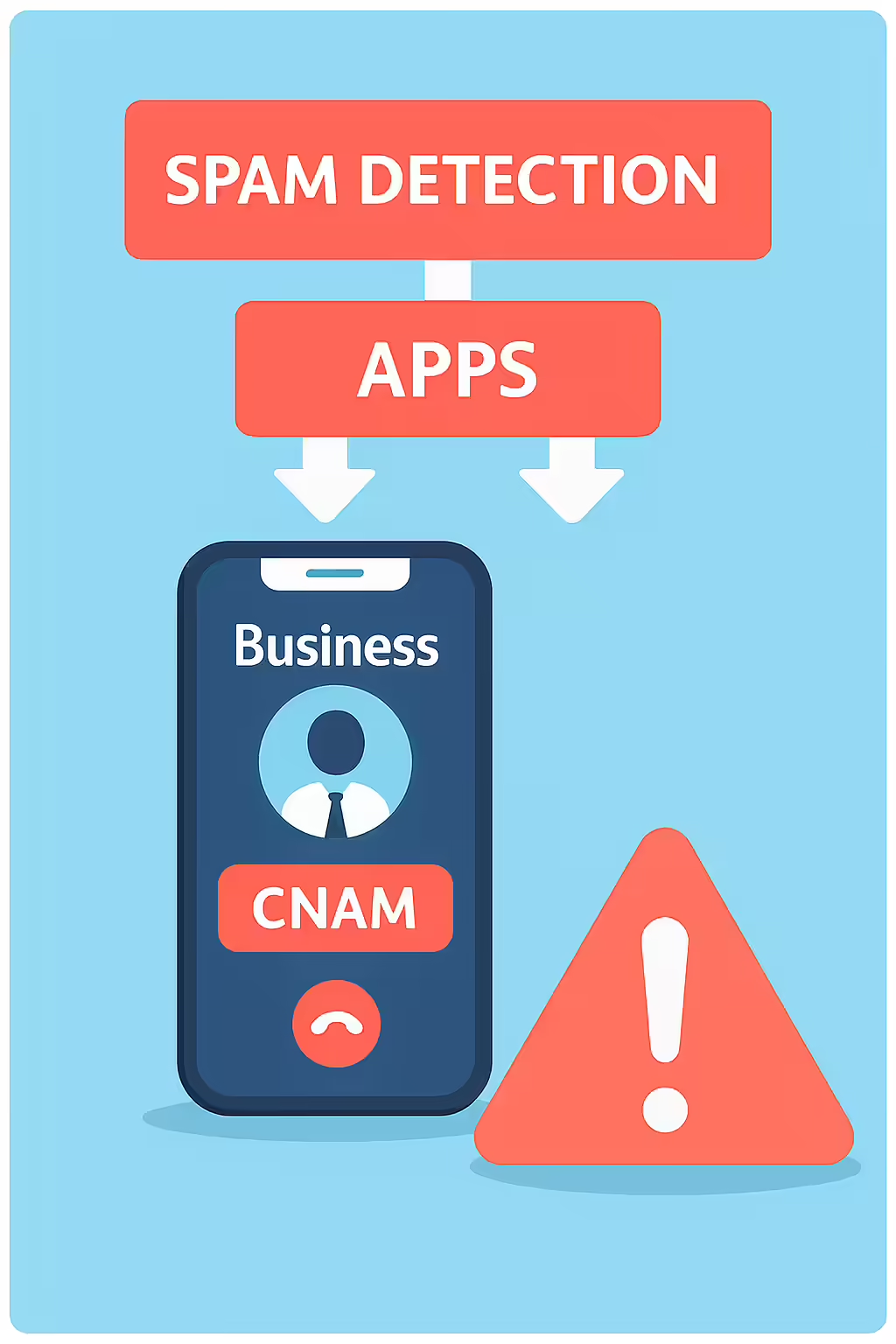
In today's telecommunications environment, achieving maximum call deliverability requires a strategy that extends far beyond the traditional Caller ID Name (CNAM) system. While a correctly registered CNAM (the 15-character name associated with your phone number) is the essential foundation of your caller identity, it is no longer sufficient on its own. A caller's reputation is now determined by an ecosystem with multiple layers, including carrier analytics and third-party smartphone apps, which can override your official CNAM and label your calls as spam.
A complete strategy must address three distinct layers of reputation:
-
Layer 1: Foundational Identity (CNAM): This is your registered identity in the legacy Line Information Database (LIDB) system. An unregistered number is inherently suspicious, so a correctly registered CNAM establishes a baseline of legitimacy.
-
Layer 2: Behavioral Reputation (Carrier Analytics): This is the primary driver behind labels like "Scam Likely." These labels are not based on your CNAM but on powerful analytic engines that monitor calling patterns. Behaviors such as making an extremely high volume of short-duration calls can trigger these negative labels.
-
Layer 3: Crowd-Sourced Reputation (Third-Party Apps): Popular apps like Hiya, Truecaller, and Nomorobo operate their own independent reputation systems. They build massive databases by aggregating user data, and the information these apps display can, and often does, override the official CNAM provided by the carrier.
Action Item: If customers report that your calls are showing up with an incorrect name or a "Spam Risk" warning, the problem may lie with one of these third-party apps. Proactively register your phone numbers with The Free Caller Registry, Hiya Connect, and other analytics providers.
If customers report that your calls are showing up with an incorrect name or a "Spam Risk" warning, the problem may lie with one of these third-party apps. Fortunately, many of these services offer portals for businesses to manage their reputation. By proactively registering your phone numbers with entities like The Free Caller Registry, Hiya Connect, and other analytics providers, you can supply them with accurate information and dispute incorrect spam labels.
Looking ahead, the industry is moving towards a more secure system with STIR/SHAKEN and Rich Call Data (RCD). STIR/SHAKEN is a framework that cryptographically verifies that a caller has the right to use a phone number, combating illegal spoofing. Building on this trust, RCD allows a verified business to display a full business name, logo, and even a reason for the call on the recipient's screen, representing the true successor to CNAM for mobile devices.
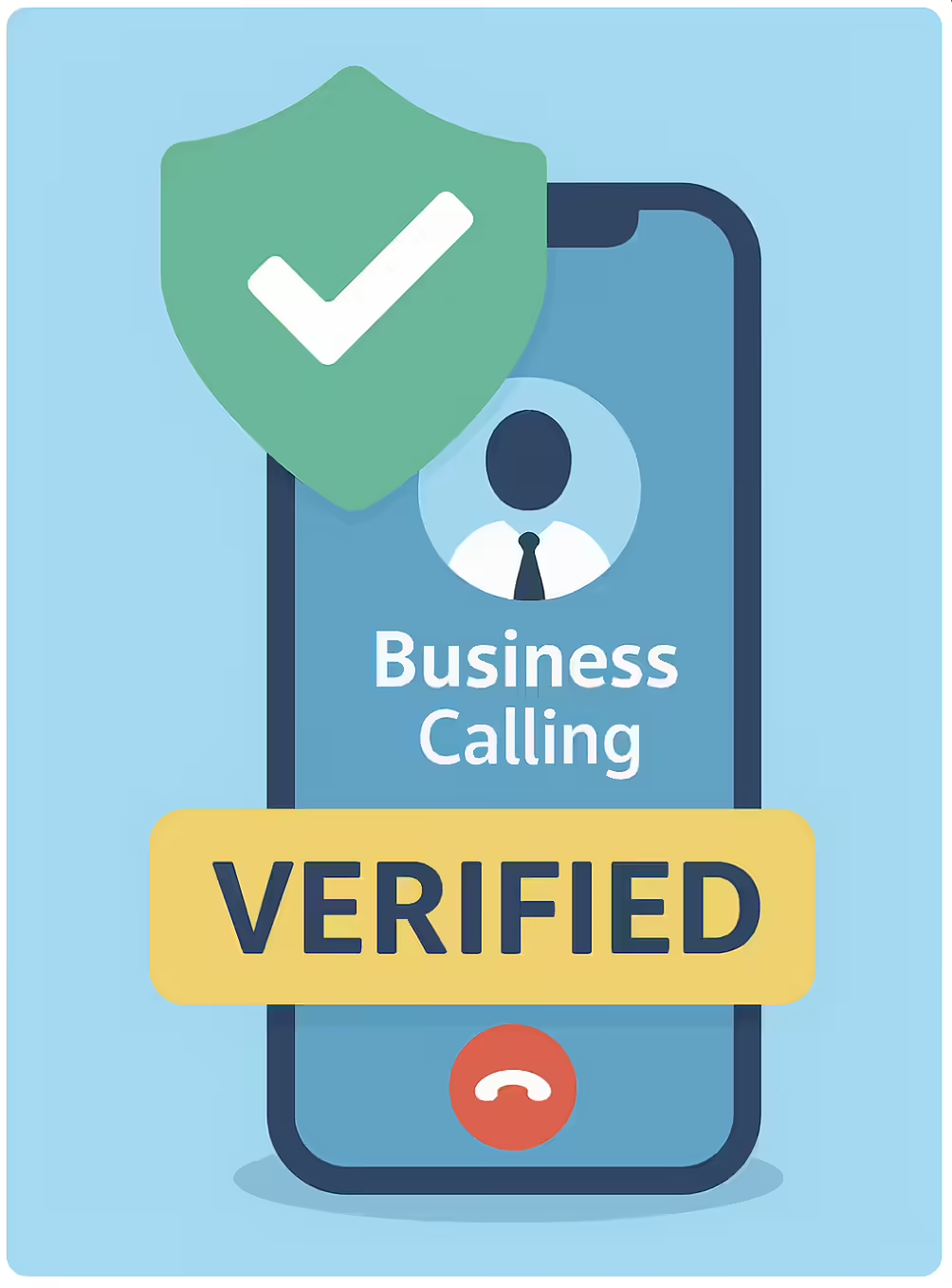
Mastering Your Caller Identity for Maximum Connection
Successfully handling the complexities of Caller ID Name (CNAM) is a critical business function that directly impacts sales, customer service, and brand perception. Achieving maximum call deliverability requires a proactive, holistic strategy for managing your entire caller reputation, moving beyond a simple setup-and-forget mentality. The telecommunications ecosystem is a fragmented and often inconsistent environment, but by understanding its layers, businesses can ensure their calls are recognized and answered.
Key Takeaway: The core strategy for any business focused on outbound calling requires managing three critical layers: your foundational CNAM identity, your behavioral reputation as monitored by carrier analytics, and your crowd-sourced reputation on third-party call identification apps.
The core strategy for any business focused on outbound calling has several parts. First, a correctly registered CNAM is the non-negotiable bedrock of your caller identity; failing to establish this baseline leaves you at an immediate disadvantage. Second, true deliverability depends on actively managing three critical layers of reputation: your foundational CNAM identity, your behavioral reputation as monitored by carrier analytics, and your crowd-sourced reputation on third-party call identification apps. Finally, it is crucial to recognize that the field is evolving. The emergence of STIR/SHAKEN and Rich Call Data (RCD) signals a shift towards a more secure and informative calling experience on mobile devices, which will become the new standard for trusted, branded communication.
Managing this complex ecosystem can be daunting. The most effective approach is to partner with a knowledgeable communications provider who understands the entire field, from the archaic LIDB network to the cutting-edge of RCD. By taking control of your caller reputation, you can break through the noise of unknown callers, build trust from the very first ring, and ensure your most important calls get answered.
